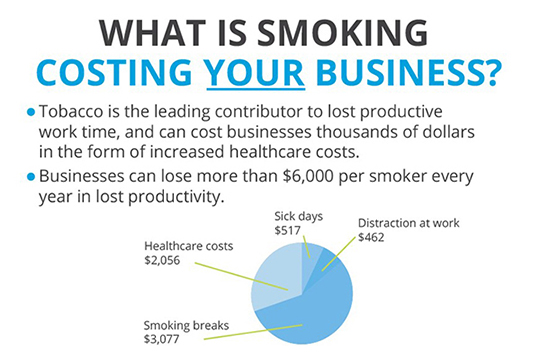News and Events
The Importance of Creating Comprehensive Tobacco-free Worksite Policies
By Amanda John
November 21, 2019
The Tobacco Free Partnership works diligently at helping businesses create smoke and tobacco free workplaces. This is based on the impact that smoke-free workplace legislation, including smoking restrictions in restaurants, has made on youth tobacco use. Smoke-free policies help young people to realize that tobacco use is not a "normal" adult behavior... an attitude that the tobacco industry has marketed for years.
“Tobacco Free Worksite Policies are obviously very important to us, but what most employers do not think about is just how important it is for them,” said Amanda John, Community Health Advocate with QuitDoc Foundation.
Tobacco free worksites protect employees from the harmful effects of secondhand smoke, and can also encourage current tobacco users to reduce their use and help those who are trying to quit. This gives employers the opportunity to reduce the negative impact of tobacco on their employees and their business.

One of the primary reasons an employer chooses to adopt a tobacco free workplace is the high cost associated with tobacco use at work. Pack-a-day smokers are estimated to have 75% more lost productive time during the work day than their non-smoking co-workers, and healthcare costs are an average of 34% higher than those who do not use tobacco (Estimating the cost of a smoking employee, 2013). In Florida, the average loss in productivity annually for a tobacco user at the workplace is $4,056. The average extra medical expense for tobacco users is $2,056 (1).
For more information about adopting a tobacco free workplace, visit www-tfp-highlands.org or contact Amanda John at ajohn@quitdoc.com. To learn more about the Quit Your Way program, visit TobaccoFreeFlorida.com/QuitYourWay.
________________________________________________________________
References:
(1) Berman M., Crane R., Seiber E., & Munur M. (2013). Estimating the cost of a smoking employee. Tobacco Control. Advance online publication. doi: 10.1136/tobaccocontrol-2012-050888




